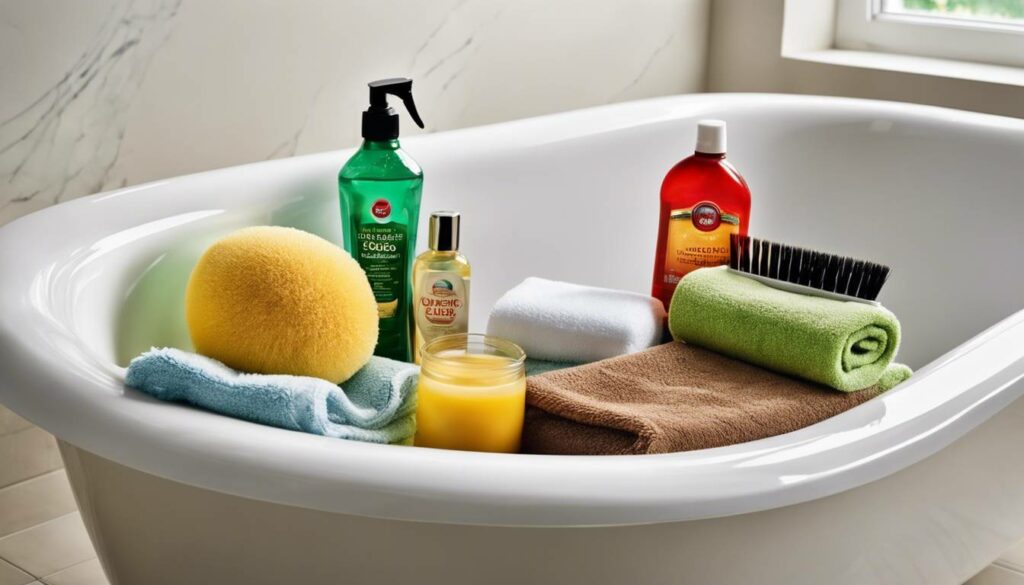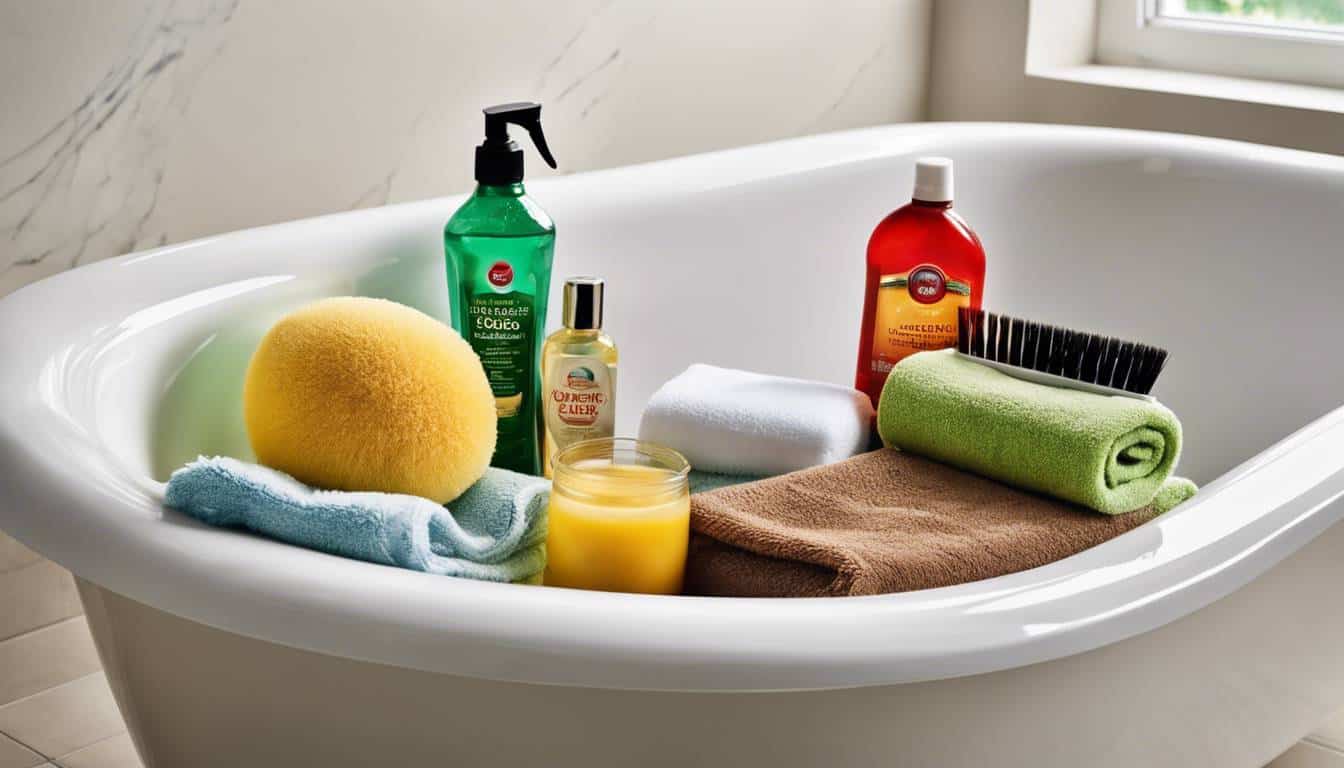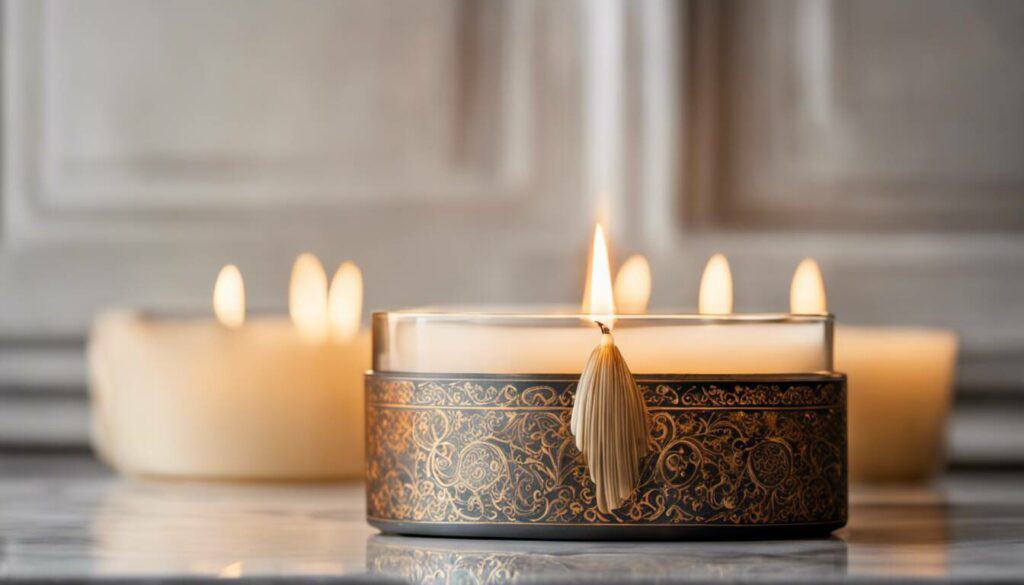I love a good bath however I the thing I always hated was cleaning it with harsh chemicals (I’m sensitive). Fortunately, I discovered that keeping your bathtub sparkling clean doesn’t require harsh chemicals. Many potent, natural ingredients, like baking soda and vinegar, have exceptional cleaning properties. Baking soda, a common kitchen ingredient, has a gentle abrasive quality that efficiently lifts dirt. Vinegar, on the other hand, with its acidic nature, is excellent at dissolving mineral deposits and soap scum. Their combined effect creates a fizzing action that scrubs away stubborn grime effortlessly without damaging your tub or harming your health. And if you’re looking for a more in-depth guide to green cleaning, check out our article on eco-friendly bathtub cleaning materials.
One effective method for cleaning a bathtub without harsh chemicals is to create a natural cleaning solution by mixing equal parts baking soda and water to form a paste. Apply the paste to the tub surface and let it sit for 15-20 minutes before scrubbing with a non-abrasive sponge or brush. Rinse thoroughly with water for a sparkling, chemical-free clean.
Natural and Environmentally Friendly Bathtub Cleaning
When it comes to cleaning your bathtub, it’s crucial to prioritize products that are safe for both you and the environment. Chemical cleaners can be harsh on your skin and respiratory system, not to mention detrimental to the planet. Opting for natural and eco-friendly methods ensures a clean bathtub without compromising health or environmental well-being.
The use of everyday household products like baking soda, vinegar, and other non-toxic cleaners can work wonders in removing soap scum, tough stains, and mineral deposits from your bathtub. These alternatives are gentle on the surface and help maintain the integrity of your bathtub material, unlike abrasive chemical cleaners.
Utilizing a mixture of baking soda and water as a gentle yet effective scrubbing paste can aid in removing stubborn stains. Baking soda is known for its natural deodorizing properties and is mild enough to be used on delicate surfaces without causing any damage.
Another natural option is white vinegar, which can dissolve mineral deposits and soap scum due to its acidic properties. A mixture of equal parts of white vinegar with water in a spray bottle creates an effective homemade cleaner.
In addition, incorporating lemon juice into your cleaning routine serves as a natural disinfectant and deodorizer. When mixed with baking soda, lemon juice forms a potent scrubbing paste that can tackle even the toughest of bathtub stains. To provide further assistance on choosing environmentally friendly cleaning products for bathtubs, we have compiled a comprehensive list of eco-friendly options on our website. This article encompasses various non-toxic alternatives that are safe for your health and contribute to reducing environmental impact.
When browsing through these options, it’s essential to consider factors such as effectiveness, safety, and sustainability. For those with porcelain tiles, we have specific recommendations to ensure you’re using the right products.
By switching to these natural and environmentally friendly cleaning methods, you not only prioritize your well-being but also contribute to creating a safer and greener environment for all.
Now, let’s shift our focus to exploring the versatile cleaning benefits of Baking Soda and Vinegar in maintaining a spotless tub using simple household items.
Baking Soda and Vinegar
Baking soda and vinegar form a dynamic duo when it comes to cleaning your bathtub without harsh chemicals. Each ingredient plays a critical role in lifting dirt, combating mineral deposits, and fighting stubborn soap scum, leaving your tub sparkling clean.
How Baking Soda Works
Imagine baking soda as a tiny magical cleaning assistant. This natural substance acts as a gentle abrasive, effectively lifting dirt and grime from the surface of your bathtub without scratching or damaging it. Its mild abrasiveness makes it perfect for removing stains and build-up without causing any harm to porcelain or fiberglass tubs.
Baking soda also has another nifty quality—its pH level is 9, which means it’s slightly alkaline. This makes it effective in neutralizing acidic odors and dissolving grease and dirt with ease.
The Power of Vinegar
Now, let’s talk about vinegar—an unsung hero in the world of natural cleaning. Vinegar brings acidity to the cleaning party, excelling at breaking down mineral deposits and soap scum that often accumulate in bathtubs. Its pH level is 2.4, making it mildly acidic. When combined with baking soda, this dynamic duo creates a chemical reaction that produces carbon dioxide gas and water. This fizzing action helps to dislodge dirt and grime while providing a satisfying scrubbing experience.
Creating the Fizzing Action
When you combine baking soda and vinegar, you unleash a powerful fizzing action that acts as a natural scrubbing agent. This fizzy reaction occurs due to the acid-base reaction between these two household ingredients, producing the fizzy carbon dioxide gas that aids in dislodging grime from your bathtub surface without resorting to harsh chemicals.
The best part about this fizzing action is that it not only helps with the actual cleaning process but also provides a visual cue that lets you know the magic is happening in real time—making it almost like a science experiment right in your bathroom!
Proportions for Effective Cleaning
So, how do you combine these two powerhouse cleaners? The proportions matter for effective cleaning. A common recommendation is mixing around half a cup of baking soda with just enough vinegar to form a paste. This paste can be applied directly to your bathtub surface and scrubbed gently for impressive results. Remember to test this mixture on an inconspicuous area of your tub before applying it all over to ensure compatibility with your tub’s material.
Armed with the knowledge of how baking soda and vinegar work wonders together, let’s explore how you can utilize their cleaning power effectively to transform your bathtub without exposing it to harsh chemicals.
Other Natural Cleaning Product Recommendations
When it comes to cleaning your bathtub without harsh chemicals, there are a few more all-natural ingredients that can work wonders. Castile soap is gentle yet effective and can remove dirt and grime without leaving any residue. It’s especially great for those with sensitive skin or allergies to synthetic fragrances. Lemon juice is another powerhouse natural cleaner, excellent for cutting through soap scum and stains, leaving your tub looking fresh and bright.
Hydrogen peroxide is also a fantastic natural disinfectant and stain remover, effective against mold and mildew, making it an ideal choice for keeping your bathtub clean and sanitized. When it comes to essential oils, both tea tree oil and lavender oil have antimicrobial properties that help eliminate germs while leaving a delightful scent behind.
Keep in mind: Mixing hydrogen peroxide with vinegar or other acidic cleaners can produce harmful fumes, so it’s best to use them separately.
Specific Product Recommendations
To make things easier for you, we’ve handpicked some of the best natural cleaning products for your bathtub that are available on our website:
- Dr. Bronner’s Pure-Castile Liquid Soap: This versatile soap boasts various natural scents and is perfect for gentle but effective cleaning.
- Lemon Essential Oil: Ideal for adding to your homemade cleaning solutions, lemon essential oil adds a refreshing fragrance while tackling tough grime.
- Hydrogen Peroxide Cleaner: Look for a reputable brand that offers hydrogen peroxide-based cleaners, ensuring your bathtub stays free of harmful bacteria and mold.
For example, Dr. Bronner’s Pure-Castile Liquid Soap is known for being made with organic and vegan ingredients. It’s highly concentrated, so a little goes a long way in naturally cleaning your bathtub.
By incorporating these natural cleaning products into your regular bathroom cleaning routine, you’re not just ensuring a clean and fresh environment without harsh chemicals; you’re also contributing to a healthier living space for you and your family.
So, the next time you embark on cleaning your bathtub naturally, consider these alternative options along with our recommended products to keep your bathroom clean and safe, without compromising on effectiveness or fragrance!
Now that we’ve explored the benefits of using natural cleaning products for your bathtub, let’s move on to preparing for a deeply rejuvenating soak. If you’re interested in cleaning shower tiles without scrubbing, we have some great tips for that too.
Setting Up for a Deep Clean Soak
The deep clean soak is pivotal in the natural bathtub cleaning process. It helps to break down dirt and grime, making it easier to clean without needing harsh scrubbing. To start, fill the bathtub with hot water—comfortably warm, not scalding hot.
Hot water helps to open up pores in your skin, and it does the same for the dirt and soap scum in your tub. It loosens these particles, preparing them for an easier clean. It might seem like a small detail, but differing water temperatures can significantly affect the effectiveness of the cleaning solution.
Filling the tub about halfway is generally enough for an effective soak. This conserves water and allows for easier movement and cleaning when you’re ready to scrub.
Natural Cleaning Ingredients Quantity
It’s crucial to use the right amount of natural cleaning ingredients for an effective soak. Using too little may not give you the desired results, while using too much could lead to wastage.
Cleaning Ingredient |
Recommended Quantity |
|---|---|
Baking Soda |
1 cup per gallon of water |
Vinegar |
1/2 cup per gallon of water |
Castile Soap |
Follow manufacturer’s instructions |
These amounts ensure that the water achieves the desired pH level for effective cleaning while preventing any unnecessary waste. If you’re looking for vinegar alternatives for cleaning a shower head, we have some great suggestions on our website.
For instance, if you use vinegar or baking soda as part of your cleaning solution, using more than needed in the soak might result in over-foaming, which can be inconvenient when trying to scrub after soaking.
It’s important to note that using excessive quantities of natural cleaning agents may negatively affect their effectiveness, so it’s best to measure carefully.
Once the hot water is in and you’ve added your chosen natural cleaning ingredients, give the mixture a gentle stir with a non-abrasive implement. Now it’s time for the soaking phase—allow the solution to sit for at least 30 minutes before proceeding to scrub.
With the deep clean soak complete, we can now move on to actually scrubbing away dirt and grime from your bathtub with ease.
Scrubbing Techniques: From Brush to Sponge
Scrubbing is the hard part of cleaning your bathtub. People tackle this job in many different ways, from using soft-bristled brushes to sponges, and even specialized tools. Let’s break down each technique and explore the best options for different types of bathtubs.
When it comes to soft-bristled brushes, they are fantastic for getting rid of tough stains. They can be used with a bit of dish soap mixed with water as a natural cleaner. What you want to avoid are abrasive tools that can scratch or damage the material. If you prefer using a brush, make sure it has synthetic bristles and is easy to hold.
On the other hand, sponges are much gentler on the surface and are a great choice for regular, less intensive cleaning. They’re perfect for getting into nooks and crannies without damaging the surface. Plus, you can find special sponges designed to clean specific materials without scratching them.
For instance, if you have a porcelain or fiberglass bathtub, a soft sponge might be more suitable. It’s all about choosing the tool that works best with the material you’re dealing with. For those with ceramic surfaces, we have a detailed guide on how to clean ceramic properly the material you’re dealing with.
If you need more detailed guidance on the best scrubbing tools and techniques for your specific type of bathtub, I recommend visiting our site. We offer comprehensive advice tailored to your needs, ensuring that you get the most relevant and effective information for achieving a sparkling clean tub without harsh chemicals.
By carefully selecting the right scrubbing tool for your bathtub and following suitable techniques, you can ensure thorough cleaning without causing any damage to the surface.
In mastering the art of scrubbing techniques for your bathtub, we lay the foundation for understanding precautionary measures essential for maintaining an effective and safe cleaning routine.
Precautions: Gloves and Water Management
When cleaning your bathtub with natural products, it’s wise to wear gloves. Natural cleaning products may be gentle on surfaces, but they can still be tough on your skin, particularly if you have sensitive skin or existing skin conditions. Wearing gloves will protect your hands, ensuring that your natural cleaning experience remains comfortable.
Why is it so important? Well, many natural cleaning products contain ingredients that are acidic or abrasive, which can irritate or dry out the skin with prolonged exposure. So, even though you’re choosing natural products to clean your tub, wearing gloves is an added layer of protection for your skin.
The Importance of Water Management
Cleaning using eco-friendly methods isn’t just about the products you use—it’s also about how you use them and the resources you consume. When cleaning your bathtub, consider a few tips for responsible water usage:
| Responsible Water Usage Tips |
|---|
| Be Mindful of Water Usage: Instead of letting the water run continuously, fill a bucket or use a cup or handheld showerhead to minimize water wastage. |
| Prevent Excessive Runoff: By plugging the drain and controlling the flow of water, you can prevent excessive runoff and support eco-friendly cleaning efforts. |
Being conscious of your water usage not only contributes to a more sustainable environment but also saves on water consumption in the long run. It’s a small step towards creating a greener house without compromising cleanliness.
Don’t forget to check out our website articles for more guidance on responsible water usage and how you can integrate eco-friendly practices into your daily cleaning routine.
By taking these simple precautions alongside using natural cleaning products in your bathtub maintenance routine, you can create a clean and safe bathing space without harming the environment or putting yourself at risk of skin irritation.
Ensuring the cleanliness of your bathtub with natural products not only benefits your health but also plays a part in minimizing environmental impact. We hope these tips help you maintain a hygienic and eco-friendly space.






